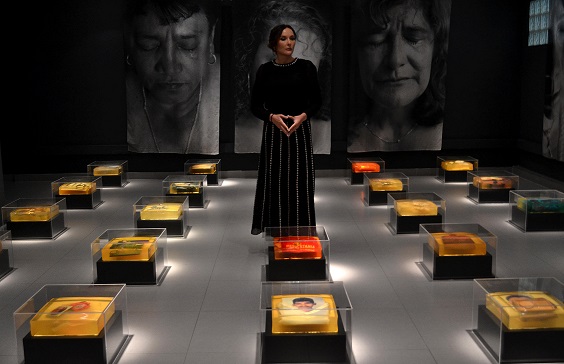
Keynote conferences > Erika Diettes THE RIGHT TO AGONY Wednesday, October 1st from 11:30 AM to 12:30 PM Centre des colloques, Amphitheater 250 Erika Diettes is a visual artist and social communicator, with a degree from the Pontifical Javeriana University and a Masters in Social Anthropology from the University of the Andes. Her artistic work focuses on the concept of grief caused by violence, and has developed mainly from her work with victims of the Colombian armed conflict. Erika Diettes' artistic work is embraced and supported by every bereaved persons and victims she has worked with. She is also nationally and internationally known, not only through the various venues where she has exhibited, but also through the awards and recognition she has received. In 2015, she was nominated for the Visionary Awards, where she was a finalist and won the Tim Hetherington Trust Fellowship and the World Press Photo Foundation Fellowship (2017-2018). In 2017, she was invited to be part of the Transformative Memory Partnership network, an international and interdisciplinary research group that seeks to exchange knowledge and practices on the ways in which memory is used, representing Colombia in various meetings held in Canada, Uganda and Colombia. More recently, in 2019, she was selected to be part of the group of women artists, leaders and intellectuals invited to Rise, a Season of Female Artist, Thinkers and Leaders as part of a program born in commemoration of Women's Rights Day, where the Sudarios exhibition was chosen to open this cultural calendar at Liverpool Cathedral. Finally, it is worth mentioning that the archives of Diettes' research and creative processes are currently housed at Tulane University's Latin American Studies Library, which in 2019 decided to receive and preserve this historically valuable information, as well as at the University of Bologna Library, which received the Relicarios 3/3 portfolio for preservation and consultation in 2022. Conference : From every point of view, it is clear that enforced disappearance takes on an infinite cruelty. The monstrous imagination it awakens foreshadows the tortures feared and endured by the loved one. Images that the heart conjures up and which, in turn, torture the soul of the bereaved loved one who, out of love, submits to the eternal wait for the return of their loved one, unjustly hoping that he or she will return, if only lifeless. However, there are other iniquities associated with enforced disappearance. Undoubtedly, the fact that death allows us to say our goodbyes is a privilege that nature has granted to some, and that violence has denied to so many others. Thus, those who use violence, by extending their hold over the way we relate to death, shatter all hope. For, having subjected life to their perverse forms, they also impose their domination over this intimate moment of relationship with the other. A moment which, beyond life itself, represents its departure and links us to our deepest, most existential truths. Debate moderated by Virginia de la Cruz (Écritures, Université de Lorraine) Erika Diettes
|


